
 Credit: Ron Townsend
Credit: Ron Townsend
Cloudy water in your aquarium can have a number of causes, and a number of solutions. We are going to have to find out a bit about your tank, such as how long it has been up and running and just what kind of cloudiness you are experiencing. Please read on until you find the scenario that you’re experiencing.
If your tank is brand new it is possible that dust and residue on your gravel is causing the cloudiness. If you didn’t wash the gravel before adding it to the tank, try washing the gravel and then draining and adding fresh water.
Another cause of cloudiness in a brand new tank could be bubbles in the water. Try leaving the tank for a few hours and let the bubbles dissolve to clear up this problem.
If gravel and bubbles aren’t the issue, try taking a pH reading of your water. If the pH is high (>7) then your water is alkaline and may be affected by aquarium decorations, or it may just be how the tap water is in your area. Check that you are only using approved decorations from a reputable pet supply store to avoid any issues with this; you do not want a decoration dissolving in your tank and affecting the pH or making your water cloudy. If you think your tap water may be to blame, try starting your tank with distilled or reverse osmosis water with no chlorine or other chemicals.
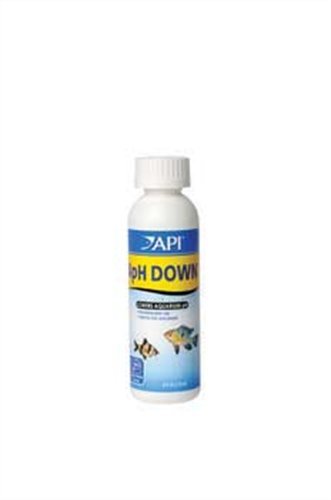 API PH Down Aquarium PH Adjuster, 4-Ounce
API PH Down Aquarium PH Adjuster, 4-Ounce
Setting up a new tank takes a bit of work and planning to succeed. An important part of this is “cycling” your tank to build up the proper “good bacteria” you will need as part of your biological filtration system. Cycling is a process that takes time, as it relies on the growth and maintenance of bacteria and can take up to 2 months to fully cycle a tank. If you tank could still be in this phase be sure to read more on the proper way to cycle your tank. Cloudy water may be a symptom of a tank in the middle of cycling, in which case the best solution is to wait for the cycling to complete.
 Credit: mobile_gnome via flickr
Credit: mobile_gnome via flickr
Cloudy green water caused by an algae bloom
If the tank is cloudy and green, you are in the middle of an algae bloom. You may be familiar with algae growing on the glass and other items in your tank, but algae can also be free floating, causing cloudy water.
Cause – Too Much Light, Excess Phosphates and Nitrates
To get control of an algae bloom you can try the following solutions:
Once you find the cause of the algae growth and put a stop to it, the issues should clear up after just a few weekly water changes, sooner if the issue was with too much food or phosphates in the water as cutting off the supply will deal with the growth quickly. Of course, if you have a large bloom underway it could take longer.
Milky aquarium water is often caused by a bacterial bloom in the tank and is primarily found during cycling, but can also occur in established tanks.
Causes – Bacterial bloom, High Phosphate levels, Overcrowding, Overfeeding
Most bacterial blooms can be avoided by keeping a clean tank and performing regular water changes. Also keep your filter material clean and clear by changing the filter medium when necessary. Be sure to monitor feeding carefully and add food slowly, adding more once everything is consumed until 2 minutes elapses or the fish stop eating.
You can try doing more frequent water changes to speed up the clarification process. While you want to be sure to clean the gravel well with each water change to remove waste, be aware that doing extra water changes can disrupt the established cycle and bio filters that you have built up and actually hinder your efforts. Changing 25% of the water every 1-2 days is enough. Be sure to do regular weekly changes for best results once the tank has cleared up.
If you have added extra fish to your tank recently the problem may be overcrowding. The recommended population for most tanks is 1” of fish per gallon of water. If you are near to or over this amount this could be causing stress to your fish and cloudy water.
When checking your filter, make sure that it is properly aerating your water. Your tank needs some way to keep the water oxygenated by breaking the surface of the water. If your filter is not a type that will break the water, or is perhaps positioned too close to the water level, consider getting an air pump to drive a bubbler to keep your tank properly oxygenated. This is a more serious problem if your tank is overstocked but it may help the issue by oxygenating the water and also by providing some circulation and improving filtration.
Solutions
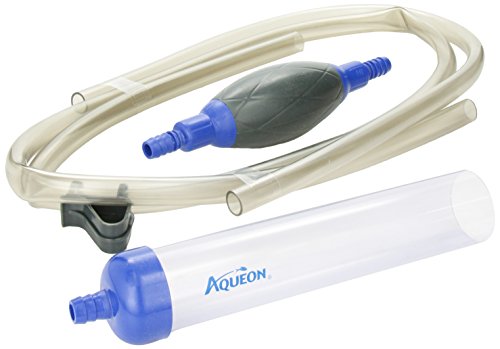 Aqueon 06232 Siphon Vacuum Aquarium Gravel Cleaner with Bulb, 10-Inch
Aqueon 06232 Siphon Vacuum Aquarium Gravel Cleaner with Bulb, 10-Inch Credit: JohnnyMrNinja via Wikimedia Commons
Credit: JohnnyMrNinja via Wikimedia Commons
There are two possible causes for brown or yellow cloudy water in your tank. The first is very simple to diagnose and solve and the second is a bit harder.
Causes – Wood ornaments, Build up of dissolved organic compounds
If you have added wood, bark or some other organic ornament to your tank it could be leeching tannins into the water. This discoloration is not a problem and should sort itself out in a few weeks as the ornament runs out of tannins to release, much like a tea bag left in a cup for a long period. If the discoloration is a real bother, you can simply remove the item from your tank.
The second cause of brown or yellow water is a build up of dissolved organic compounds (DOC). This can be excess food, fish waste that isn’t being filtered adequately, dead plants left floating in the water or even a dead fish.
Be sure that your tank is not overstocked and that your filter is adequate for the size of your tank. Remember the rule of 1” of fish per gallon of water and a filter rated at least for the size of your tank if not larger.
Be sure not to overfeed your fish and to do gravel cleaning at least once a week to remove waste stuck in the gravel that does not get filtered. If you notice dead plants, or bits of plant that have been ripped off of living plants, remove them quickly. This goes for dead fish as well. If you notice that you haven’t seen a certain fish in a while be sure to check behind rocks and hiding places to make sure it has not died.
Solutions
Performing these steps to eliminate the cause of the cloudiness will lead to a clear tank once again. To aid in the clean up and prevent repeats you can use an activated carbon filter. This is especially good for removing bad smells from your water and leaving your water looking extra clear.
Once you’ve determined the type and cause of cloudiness in your tank you can use these tips to solve the issue. Most cloudiness is caused by a dirty tank so be sure to keep your tank clean with weekly cleanings and water changes. Check that your filter is the right size for your tank and that you do not have too many fish. Avoid overfeeding and keep your chemical levels in order and you should be well on your way to raising happy wish in a crystal clear tank.
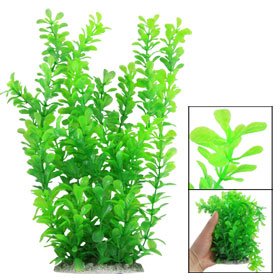 Aquarium Plants for Beginners
It is easy to see why so man
Aquarium Plants for Beginners
It is easy to see why so man
 How to Take Care of The Baby Betta Fish
How to Take Care of The Baby Betta Fish
How to Take Care of The Baby Betta Fish
How to Take Care of The Baby Betta Fish
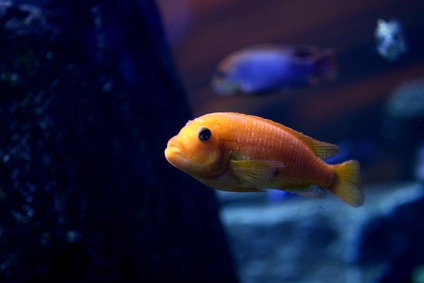 How to Take Care of a Baby Parrot Fish
How to Take Care of a Baby Parrot Fish
How to Take Care of a Baby Parrot Fish
How to Take Care of a Baby Parrot Fish
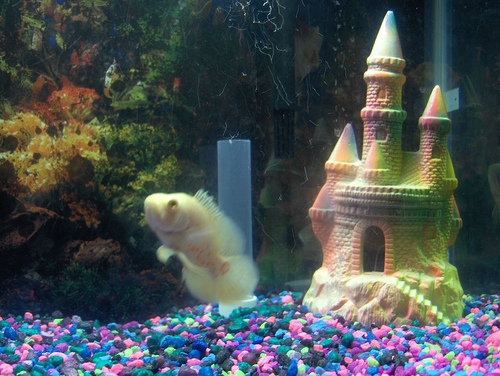 How to Make a Salt Water Fish Tank
How to Make a Salt Water Fish Tank
How
How to Make a Salt Water Fish Tank
How to Make a Salt Water Fish Tank
How
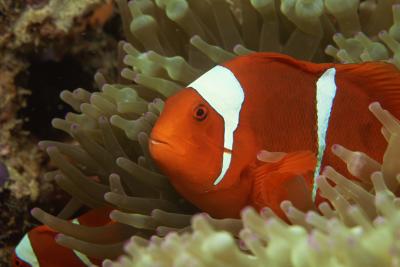 Clown Fish Small Tank Set Up for Beginners
Clown Fish Small Tank Set Up for Beginners
Clown Fish Small Tank Set Up for Beginners
Clown Fish Small Tank Set Up for Beginners
Copyright © 2005-2016 Pet Information All Rights Reserved
Contact us: www162date@outlook.com